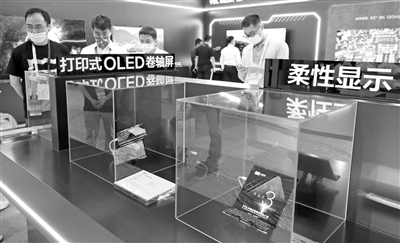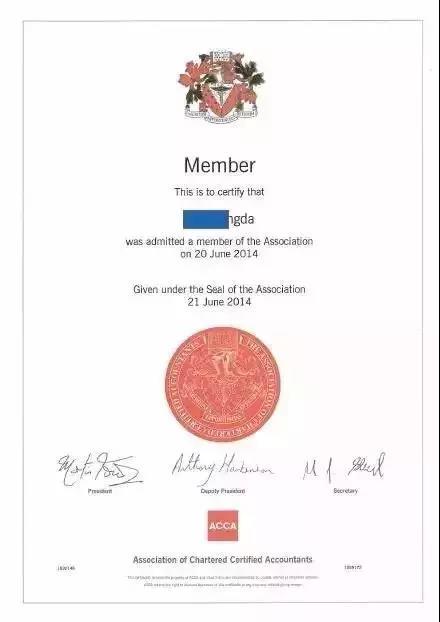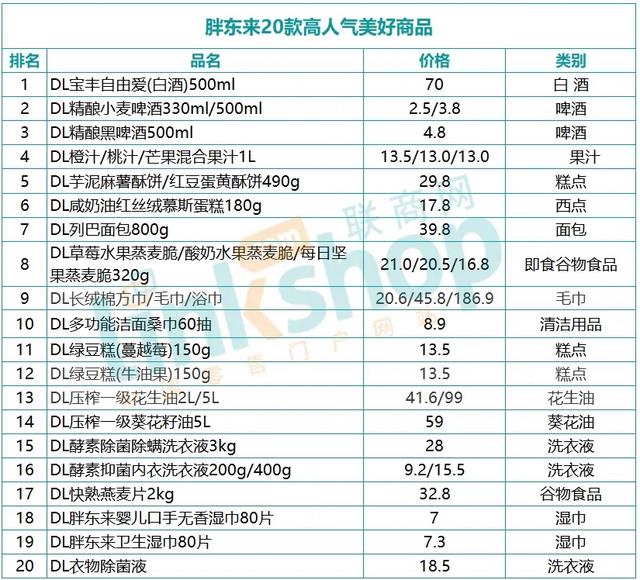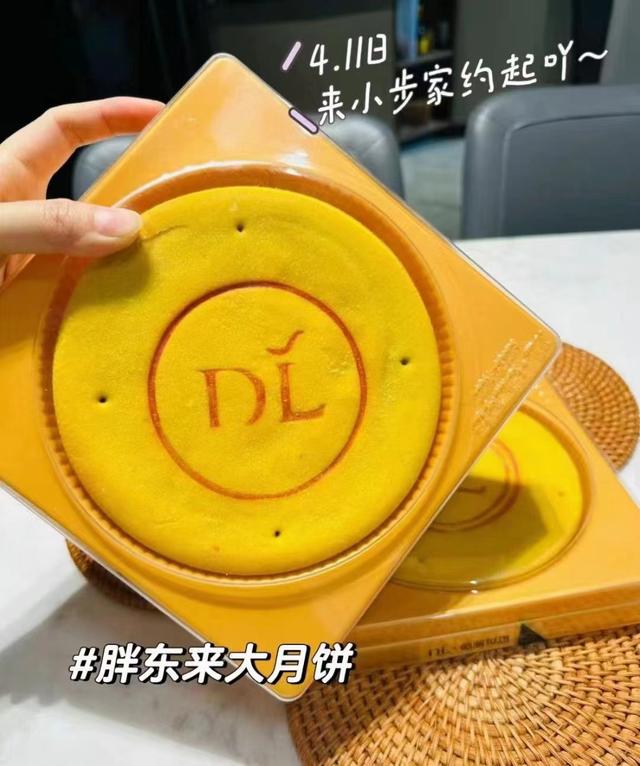Xinhua News Agency, Beijing, June 13th
Speech at the symposium on further promoting the development of the Yangtze River Economic Belt
(April 26, 2018)
Supreme leader
This symposium is the second symposium on the development of the Yangtze River Economic Belt hosted by me. The last time was held in Chongqing in the upper reaches of the Yangtze River in January 2016, and this time it was held in Wuhan in the middle reaches of the Yangtze River.
Promoting the development of the Yangtze River Economic Belt is a major decision made by the CPC Central Committee, a major strategy related to the overall development of the country, and of great significance to achieving the goal of "two hundred years" and realizing the Chinese dream of the great rejuvenation of the Chinese nation.
Generally speaking, it is necessary to intensify efforts to implement the development strategy of the Yangtze River Economic Belt. This is the purpose of my research and symposium. In the past few days, I have visited Yichang, Jingzhou, Yueyang, Wuhan and the Three Gorges dam area, and inspected the transformation and development of enterprises, the relocation of chemical enterprises, the regulation of illegal docks, pollution control, river regime control and revetment works, waterway regulation, wetland restoration, hydrological monitoring at hydrological stations, and made research in villages, enterprises, communities and other places, and listened to the relevant responsible comrades from Hubei and Hunan about the province’s participation in the development of the Yangtze River Economic Belt. Just now, I listened to the speeches of the responsible comrades of the National Development and Reform Commission, the Ministry of Ecology and Environment, the Ministry of Transport and the Ministry of Water Resources, and some responsible comrades of provinces and cities. Comrade Han Zheng also made a speech. Now, based on the investigation and comrades’ speeches, I would like to make some comments on three issues.
The first question: comprehensively grasp the situation and tasks of the development of the Yangtze River Economic Belt.
On January 5, 2016, I emphasized at the symposium on promoting the development of the Yangtze River Economic Belt hosted by Chongqing that the Yangtze River is the mother river of the Chinese nation and an important support for the development of the Chinese nation; To promote the development of the Yangtze River Economic Belt, we must consider the long-term interests of the Chinese nation, put the restoration of the Yangtze River ecological environment in an overwhelming position, make great efforts to protect the Yangtze River without large-scale development, and strive to build the Yangtze River Economic Belt into a golden economic belt with more beautiful ecology, smoother traffic, more coordinated economy, more unified market and more scientific mechanism, and explore a new path of ecological priority and green development.
Over the past two years, the Office of the Leading Group for Promoting the Development of the Yangtze River Economic Belt has done a lot of work with relevant departments in the State Council and provinces and cities along the Yangtze River, and has made positive progress in strengthening top-level design, improving ecological environment, promoting transformation and development, and exploring institutional and institutional reforms. First, the planning policy system has been continuously improved. The Outline of the Yangtze River Economic Belt Development Plan and 10 special plans have been issued and implemented, and more than 10 policy documents in various fields have been issued and implemented. Second, the protection pattern has been basically established, and a series of special rectification actions have been carried out. Among the illegal docks, 959 have been completely dismantled, 402 have been basically rectified and standardized, and special rectification actions such as drinking water sources, sewage outlets into rivers, chemical pollution and solid waste have been solidly carried out. The excellent proportion of water quality in the Yangtze River has increased from 74.3% at the end of 2015 to 77.3% in the third quarter of 2017. Third, the construction of comprehensive three-dimensional traffic corridors has been accelerated, positive progress has been made in industrial transformation and upgrading, new urbanization has been continuously promoted, the level of opening up has been significantly improved, and the economy has maintained a steady growth momentum. The regional GDP of 11 provinces and cities along the Yangtze River has accounted for more than 45% of the country. Fourth, focus on the key issues of improving people’s livelihood, solidly promote the equalization of basic public services, and significantly improve people’s living standards.
While affirming our achievements, we should also clearly see the difficulties, challenges and outstanding problems we face.
First, there is still some one-sided understanding of the development strategy of the Yangtze River Economic Belt. Over the past two years, the ideological understanding of leading cadres at all levels has been deepened, but some people’s understanding is not comprehensive and in-depth. Some people think that joint efforts to protect and develop will mean no development, and there is no dialectical view of the relationship between economic development and ecological environment protection. Some people are still influenced by the old ideas of pollution before treatment, destruction before repair, and think that "environmental costs still have to be paid" in the stage of catching up with development, and they don’t know enough about the importance of joint protection. Some environmental governance and restoration projects are slow to advance, and there are not many methods, and even delay prevarication for reasons such as lack of funds and difficulty in governance. This reflects that some comrades are not active enough and creative enough in grasping ecological environmental protection, and their ideological knot has not really been untied.
Second, the ecological environment situation is still grim. The ecological function of the river basin is still seriously degraded. Dongting Lake and Poyang Lake, which are "two kidneys" of the Yangtze River, frequently dry to the bottom, and nearly 30% of the important lakes and reservoirs are still in a state of eutrophication, and the biological integrity index of the Yangtze River has reached the worst "no fish" level. The industrial development along the Yangtze River has a large inertia, and the pollutant discharge base is large. The discharge of wastewater, chemical oxygen demand and ammonia nitrogen accounts for 43%, 37% and 43% of the country respectively. The problems of indiscriminate occupation and abuse, occupation without use, more occupation with less use and extensive utilization of the coastline and ports of the Yangtze River are still outstanding. The hidden dangers of environmental risks in the river basin are prominent. 30% of the environmental risk enterprises in the Yangtze River Economic Belt are located within 5 kilometers around the drinking water source, and the production, storage and transportation areas are alternately distributed. The annual throughput of dangerous chemicals in trunk ports reaches 170 million tons, exceeding 250 kinds, and the transportation volume is still growing at an annual rate of nearly 10%. At the same time, some new problems have emerged, such as the illegal dumping of solid hazardous waste across regions, the intensification of hidden dangers of the transfer of polluting industries to the middle and upper reaches, and so on.
Third, the system and mechanism of coordinated protection of ecological environment need to be established and improved urgently. The working mechanism of unification, separation and overall linkage is not perfect, the ecological environment protection system is not perfect, the construction of market-oriented and diversified ecological compensation mechanism is slow, the hard constraint mechanism of ecological environment has not been established, and the process of protecting the Yangtze River by law is lagging behind. The coordinated management of ecological environment is weak, and it is difficult to effectively adapt to the requirements of integrity management of the whole basin.
Fourth, the problem of unbalanced and uncoordinated river basin development is prominent. The Yangtze River Economic Belt spans the eastern, central and western parts of China, with great differences in regional development conditions, infrastructure, public services and people’s living standards. The task of getting rid of poverty in the Three Gorges reservoir area, the flood storage and detention area in the middle and seven concentrated contiguous poverty-stricken areas is still very arduous. Regional cooperation is more virtual than real, urban agglomeration lacks coordination and driving force.
Fifth, the subjective initiative of relevant parties needs to be improved. The scale of funds specially arranged by the central government for ecological environmental protection in the Yangtze River Economic Belt is not large, and the degree of overall planning and overall efficiency of relevant departments involved in ecological environmental protection funds arrangement in the Yangtze River Economic Belt are not strong. Local investment and enthusiasm are lacking, and the support of policy finance and development financial institutions is insufficient. The participation of enterprises and social capital is not high. The contingent of cadres is inadequate, publicity and education are not in place, and the training and exchange of talents are also insufficient.
The second question: several relations that need to be correctly grasped to promote the development of the Yangtze River Economic Belt.
Now, China’s economy has shifted from a high-speed growth stage to a high-quality development stage. Under the new situation, the key to promote the development of the Yangtze River Economic Belt is to correctly grasp the relationship between overall promotion and key breakthroughs, ecological environment protection and economic development, overall planning and long-term success, breaking old kinetic energy and cultivating new kinetic energy, self-development and coordinated development, adhere to the new development concept, adhere to the general tone of striving for progress while maintaining stability, and strengthen reform and innovation, strategic overall planning and guidance, so as to make the Yangtze River Economic Belt a new force leading the high-quality development of China’s economy.
First, correctly grasp the relationship between overall promotion and key breakthroughs, and comprehensively do a good job in the protection and restoration of the Yangtze River ecological environment. To promote the development of the Yangtze River Economic Belt, the premise is to adhere to ecological priority, put the restoration of the Yangtze River ecological environment in an overwhelming position, and gradually solve the problem of overdraft of the Yangtze River ecological environment. Therefore, it is necessary to focus on the integrity of the ecosystem and the systematicness of the Yangtze River basin, coordinate ecological elements such as landscapes, forests, fields, lakes and grasses, and implement ecological restoration and environmental protection projects. It is necessary to adhere to the overall promotion, enhance the relevance and coupling of various measures, and prevent the heavy and light, single-handedly rushing, and paying attention to one thing. It is necessary to persist in key breakthroughs, grasp the main aspects of major contradictions and contradictions on the basis of overall promotion, take targeted and concrete measures, and strive to achieve the integration of overall and local conditions, the combination of radical treatment and palliative treatment, and the convergence of gradual progress and breakthrough, so as to achieve the unity of overall promotion and key breakthroughs.
In recent years, all parties concerned have done a lot of work around the protection and restoration of the ecological environment of the Yangtze River, but the task is still very arduous. We need to analyze the reasons further. Chemical pollution control is related to water environment control and solid waste control. Is there any synergy in the process of grasping? When grasping major ecological restoration projects such as wetlands, did you first look for the reasons from the source from the perspective of the integrity of the ecosystem, especially the relationship between rivers and lakes, and then implement the control measures after designing the system? I saw a report that Jialing River is an important tributary of the upper reaches of the Yangtze River and an important drinking water source for more than 10 cities in Sichuan and Chongqing. The ecological barrier strategy is of great significance. However, after more than 30 years of development, a large number of mining and smelting enterprises have been laid out in the upper reaches of Jialing River, forming more than 200 tailings ponds, which pose a great threat to the ecology along the river. Some cities located at the dividing point of the upper and middle reaches of Jialing River reflect that although they insist on ecological priority and step up prevention and control, they still suffer from imported pollution, and the drinking water safety of hundreds of thousands of people in urban areas and towns along the Yangtze River is frequently threatened. From this situation, it can be seen that at present, the ecological environment protection and restoration work in the Yangtze River is mostly "seeking a domain", and there are many "passive" key breakthroughs; It is insufficient to "seek the overall situation" and less to "actively" promote the whole. This requires a correct grasp of the relationship between overall promotion and key breakthroughs, based on the overall situation, making decisions before moving, and striving to achieve remarkable results.
I said that "the Yangtze River is sick" and it is not very sick. To cure the "Yangtze River Disease", we must scientifically apply the holistic view of TCM, trace the source, diagnose the cause, identify the root of the disease, classify policies and systematically treat it. This should be the first move for the Yangtze River Economic Belt to jointly protect and not develop. Starting from the integrity of the ecosystem and the systematicness of the Yangtze River basin, we should carry out a general survey of the ecological environment of the Yangtze River, systematically sort out and master all kinds of ecological hidden dangers and environmental risks, do a good job in evaluating the carrying capacity of resources and environment, and make a general physical examination of the mother river. In view of all kinds of ecological hidden dangers and environmental risks found, according to the concept that mountains, rivers, fields, lakes and grasses are a living community, we should study and put forward the overall plan and action plan for systematically restoring and protecting the ecological environment from the source, and then make classified policies and key breakthroughs, and strive to get rid of the disease by expelling wind, relaxing muscles and activating blood, regulating viscera and dredging meridians. According to the orientation of the main functional area, it is necessary to clearly define the spatial management and control units that optimize development, focus development, restrict development and prohibit development, establish and improve a long-term mechanism for monitoring and early warning of the carrying capacity of resources and environment, and achieve "prevention of disease" so that the mother river will remain vibrant forever.
Second, correctly grasp the relationship between ecological environmental protection and economic development, and explore new ways to jointly promote ecological priority and green development. To promote the Yangtze River Economic Belt to explore new ways of ecological priority and green development, the key is to properly handle the relationship between green mountains and green hills and Jinshan Yinshan. This is not only an inherent requirement to achieve sustainable development, but also a major principle to promote modernization. Ecological environmental protection and economic development are not contradictory, but dialectical unity. In the final analysis, the success or failure of ecological environment protection depends on the economic structure and economic development mode. Economic development can’t exhaust resources and ecological environment, and ecological environment protection is not to abandon economic development and seek fish from trees. We should adhere to protection in development and development in protection, realize the coordination of economic and social development with population, resources and environment, and make green mountains and green mountains produce great ecological, economic and social benefits.
To promote the green development of the Yangtze River Economic Belt, we must first solve the problem of ideological understanding, especially the ecological environment protection and economic development can not be separated, let alone opposed. We must resolutely abandon the practice of exchanging temporary economic development at the expense of the environment. Some comrades do not have a clear understanding of the potential needs contained in ecological environmental protection, and they do not know the supply and new growth points that these needs may inspire, and they do not explore the path and method of transforming green mountains and green mountains into Jinshan Yinshan. We must make a fundamental change in our ideological understanding and concrete actions.
I saw a report from Xinhua News Agency that a Linjiang chemical enterprise located in the Shishou section of the Yangtze River "Jiuqu Ileum" ranks among the top three in the world in terms of industrial scale, and it is also a large local taxpayer, but the serious pollution problem has been difficult to solve for many years, and the people around it are miserable. In the past two years, the environmental protection department has made a serious investigation and issued the "biggest environmental protection ticket in history" in the Yangtze River basin of more than 27 million yuan, forcing enterprises to close production lines that are heavily polluted and difficult to transform, and invest about 100 million yuan to introduce the most advanced pollution control devices in the industry, which not only solved the pollution problem for many years, but also promoted the transformation and upgrading of enterprises, killing two birds with one stone. Lishui City, Zhejiang Province has adhered to the road of green development for many years, unswervingly protected the "golden rice bowl" of green water and green mountains, and strived to transform the value of ecological products contained in green water and green mountains into Jinshan Yinshan. The ecological environment quality, development process index and farmers’ income growth rate have ranked first in the province for many years, achieving coordinated progress in ecological civilization construction, poverty alleviation and rural revitalization.
The Yangtze River Economic Belt should embark on a new path of ecological priority and green development. First, we should profoundly understand and grasp the connotation of joint protection, no development, ecological priority and green development. Grasping great protection and ecological priority together is the issue of ecological environmental protection, which is the premise; Not engaging in large-scale development and green development is about economic development, not the result; Grasp the great protection together, do not engage in great development, focus on the current and strategic methods; Ecological priority and green development emphasize the future and direction path, which are dialectical unity with each other. Second, we should actively explore ways to promote the transformation of green mountains and green hills into Jinshan Yinshan, select qualified areas to carry out pilot projects of eco-product value realization mechanism, and explore ways to realize the value of eco-products under the leadership of the government, the participation of enterprises and all sectors of society, market-oriented operation and sustainability. Third, we should thoroughly implement the rural revitalization strategy, fight hard against poverty, give full play to the advantages of rich rural ecological resources, attract capital, technology, talents and other elements to flow to the countryside, turn green mountains and green hills into Jinshan Yinshan, and drive the poor to increase their income.
Third, correctly grasp the relationship between overall planning and long-term success, and unswervingly carry out a blueprint to the end. Promoting the development of the Yangtze River Economic Belt involves various fields of economic and social development, and it is a systematic project, and it is impossible to accomplish all its tasks in one battle. To do a good job in top-level design, we must have the realm of "I don’t have to be successful" and the responsibility of "I must be successful". We should carry out a blueprint to the end, grasp the results in a down-to-earth manner, and accumulate small victories for great victories.
In recent years, through the joint efforts of the provinces and cities along the Yangtze River and relevant departments, the special treatment and pollution prevention have achieved phased results, especially the improvement of illegal docks. At the same time, we must guard against resurgence. According to media reports, the special rectification of illegal docks and illegal sand mining in the Yangtze River trunk line launched in 2015 has achieved good results. However, due to the strong demand for sand and gravel in the construction market recently, the rebound pressure of illegal docks in the Yangtze River is greater. Some departments have relaxed after long-term high-pressure supervision, and some illegal dock owners have secretly restarted their stoves in an attempt to resume construction. The results of illegal wharf and illegal sand mining control are hard-won, so a long-term mechanism must be established to resolutely prevent rebound. When I went to Sichuan for investigation, I saw that the ecological environment of Tianfu New District was very good. It takes overall planning and long-term efforts to achieve such results. I understand that the Chengdu section of Fuhe River, which I mentioned at the Chongqing symposium in 2016, is an important ecological corridor in Tianfu New District. In order to control the serious pollution problem, the local government, on the basis of doing a good job in top-level design, promotes the simultaneous efforts of sewage interception, dredging and water replenishment according to the time sequence requirements of one year’s pollution control, two years’ landscaping and three years’ development, and adopts measures such as landscape improvement and long-term management. It is planned to realize the sewage-free entry of the main stream and important tributaries into the river by the end of May this year. In 2015-2016, the overall water quality of the national control section of Fuhe Huanglongxi was worse than category 5, in 2017, it was category 5, and in the first two months of this year, it was category 4, and the overall trend was constantly improving. Therefore, after the top-level design is completed, as long as you knock one hammer after another,It is bound to be fruitful.
At present and in the future, it is necessary to further implement the Outline of the Development Plan for the Yangtze River Economic Belt, organize a mid-term evaluation of the Outline of the Plan in light of the implementation situation and the new changes in the development environment at home and abroad, and adjust and improve the planning content according to the new situation and new requirements. In accordance with the requirements of "multi-regulation integration", on the basis of evaluating the carrying capacity of resources and environment and the suitability of land space development, we should promptly complete the delineation of the three control lines of ecological protection red line, permanent basic farmland and urban development boundary in the Yangtze River Economic Belt, scientifically plan the land space development and protection pattern, establish and improve the land space management and control mechanism, and use space planning to guide the space utilization tasks in water resources utilization, water pollution prevention, shoreline use and shipping development. Promote the pattern of economic and social development, the spatial layout of cities and towns, the adjustment of industrial structure and the carrying capacity of resources and environment, do a good job of coordination with the establishment of a negative list management system, and ensure the formation of the overall top-level synergy. It is necessary to formulate a clear timetable and road map for achieving the established goals, and make steady and steady progress step by step.
Fourth, correctly grasp the relationship between breaking old kinetic energy and cultivating new kinetic energy, and promote the construction of a modern economic system in the Yangtze River Economic Belt. The driving force of development determines the development speed, efficiency and sustainability. It is necessary to solidly promote the structural reform of the supply side, promote the transformation of the development momentum of the Yangtze River Economic Belt, and build a modern economic system. The long-term accumulation of traditional backward production capacity along the Yangtze River is huge, with many risks and weak kinetic energy, and the inertia of following the traditional development model and path is huge. However, if we can’t actively and steadily resolve these old kinetic energy and reform and innovate the traditional development mode and path, it will not only squeeze and hinder the cultivation and growth of new kinetic energy, but also trigger the "black swan" incident and the "grey rhinoceros" incident if it is not handled well. The old ones don’t go, and the new ones don’t come. To promote the high-quality development of the Yangtze River Economic Belt, we should take the determination of a strong man to break his wrist and scrape the bones to heal the wounds, actively and steadily retreat to dissolve the old kinetic energy, get rid of the ineffective supply, completely abandon the old road dominated by investment and factor input, create conditions and leave room for the development of new kinetic energy, and then devote ourselves to cultivating and developing advanced production capacity, increasing effective supply, accelerating the formation of new industrial clusters, and breeding more good "birds" who eat less, lay more eggs and fly far, so as to realize cage exchange.
The population gathered and the regional GDP created by the Yangtze River Economic Belt account for more than 40% of the country, and the total import and export volume accounts for about 40% of the country. It is the economic center and vitality of China. At the same time, we should also see that the high-density layout of heavy chemical industry along the Yangtze River has long been a gathering area of heavy chemical industry in China. It has been reported many times by the media that the problem of "chemical encircling the river" along the Yangtze River is prominent, especially the pollution of phosphorus chemical industry. From phosphate mining to the processing of phosphorus chemical enterprises to the generation of chemical wastes, the whole industrial chain has become a hidden worry of pollution in the Yangtze River. In addition, local governments are worried that excessive remediation efforts will affect fiscal revenue, thus affecting people’s livelihood investment, etc., and have always been afraid of difficulties in the supervision of chemical enterprises, resulting in increasingly serious total phosphorus pollution in tributaries and main streams of the Yangtze River. Since 2016, Yichang City, Hubei Province has realized the seriousness of "chemical encircling the river" to restrict urban development, and made up its mind to formulate a work plan for chemical pollution remediation, focusing on eliminating backward production capacity and resolving excess chemical production capacity, and promoting the "closing, transferring and moving" of 134 chemical enterprises along the river to prevent chemical pollution risks; On the other hand, the new space vacated by the old kinetic energy is used to cultivate fine chemical production capacity and guide the chemical industry to develop to the high end, and the economic development presents a new look. In 2017, the city’s energy consumption per unit GDP decreased by 7.14% and water consumption decreased by 13.7%. The water quality of major rivers was generally good, and the concentrations of PM10 and PM2.5 decreased by 9.3% and 6.5% respectively, and the regional GDP maintained steady growth.Practice has proved that it is promising to realize the conversion between old kinetic energy and new kinetic energy as long as the ideas are right and solid.
To promote the high-quality development of the Yangtze River Economic Belt and build a modern economic system, we must adhere to the requirements of quality first and efficiency first, promote quality change, efficiency change and power change, accelerate the construction of an industrial system with coordinated development of real economy, scientific and technological innovation, modern finance and human resources, and build an economic system with effective market mechanism, dynamic micro-subjects and moderate macro-control. Among them, it is an important link to realize power change and accelerate power conversion. Correctly grasping the dialectical relationship between breaking old kinetic energy and cultivating new kinetic energy, we should not only keep a close eye on the new stage of economic development and the new frontier of scientific and technological development, but also unswervingly take cultivating and developing new kinetic energy as an important starting point to create new competitive advantages, and also unswervingly take breaking old kinetic energy as an important content to increase and develop new kinetic energy and cultivate overall strength, and actively create new economic growth poles. We should focus on implementing the innovation-driven development strategy and turn the unique advantages of scientific research and talents brought by the Yangtze River economy into development advantages. We must make great efforts to eliminate and shut down backward production capacity, and adopt various means such as raising environmental protection standards and strengthening law enforcement to force industrial transformation and upgrading and high-quality development. It is necessary to find new breakthroughs in comprehensive three-dimensional traffic corridors, new urbanization, and opening up to the outside world, and jointly enhance the development momentum of the Yangtze River Economic Belt. The Yangtze River Economic Belt is the main intersection of the "Belt and Road" in China. It should co-ordinate the opening of coastal areas, along the Yangtze River, along the border and inland areas, realize organic integration with the "Belt and Road" construction, and cultivate new advantages in international economic cooperation and competition.
Fifth, correctly grasp the relationship between self-development and coordinated development, and strive to build the Yangtze River Economic Belt into an organically integrated and efficient economy. As a basin economy, the Yangtze River Economic Belt involves many aspects such as water, roads, ports, shores, production and cities. It is necessary to correctly grasp the relationship between its own development and coordinated development by using the method of system theory. Every region and city in the Yangtze River Economic Belt should and must have the will to promote their own development, which is understandable. However, in the process of their respective development, we must set out from the whole, establish the idea of "playing a chess game", put their own development into the overall situation of coordinated development, and realize dislocation development, coordinated development and organic integration to form an overall synergy.
At present, the problems of disorderly and inefficient competition and industrial isomorphism in the development of the Yangtze River Economic Belt are still very prominent. In some places, there are cases of encircling the site, grabbing resources, compartmentalizing and disorderly competition, and there are also problems such as grabbing development resources, lacking the spirit of cooperation, and destroying the connection and extension of the industrial chain. I often say that the cost of logistics in our country is on the high side, among which the transportation efficiency is not high. The main reason is that various modes of transportation develop in their own way, and various modes of transportation are not well coordinated and their structures are unbalanced and unreasonable. There are various types of transportation modes along the Yangtze River Passage, so attention should be paid to strengthening cohesion and coordination to improve overall efficiency. For example, the "intestinal obstruction" problem of the Three Gorges shiplock, which has been seriously restricting the navigation of the Yangtze River, can we find an effective solution from the overall situation of the comprehensive transportation system? Some experts have proposed to solve this problem once and for all by building a heavy-haul railway along the river. Whether it is feasible or not, we should pay close attention to demonstration and determination. For another example, can the three major urban agglomerations along the Yangtze River combine their location conditions, resource endowments and economic foundation in their respective development processes to study and put forward new goals and measures for differentiated and coordinated development in the "chess game" of high-quality development of the Yangtze River Economic Belt? When defining the orientation and direction of self-development, can major, medium and small cities base themselves on the orientation and direction of the whole urban agglomeration, find the key direction of their own misplaced development, and solve the problem of homogeneous development?It is necessary to seriously study and think about these issues. To promote the development of a huge aggregate, we must deal with the relationship between self-development and coordinated development, first solve the problem of ideological understanding, and then work hard from the aspects of institutional mechanisms and policy measures to do a good job in the "chess game" of regional coordinated development.
Here, I’ll ask a few questions. First, we must deeply understand the essence of implementing the strategy of regional coordinated development. According to the orientation of main functional areas and the requirements of precise policies, fine measures and coordination mechanism, all regions should implement the strategy of regional coordinated development completely and accurately, promote the equalization of basic public services, achieve a relatively balanced access to infrastructure and greatly improve people’s living standards. Second, the leading group for promoting the development of the Yangtze River Economic Belt should give full play to its leading role, clarify what it wants, what it abandons, what it prohibits and what it does in terms of ecological environment, industrial spatial layout, port shoreline development and utilization, and comprehensive utilization of water resources, and on this basis, coordinate the enthusiasm of all localities along the Yangtze River. Third, it is necessary to improve the inter-provincial consultation and cooperation mechanism, and coordinate and solve the major issues of cross-regional infrastructure interconnection and river basin management, such as how to coordinate the development of various modes of transportation, reduce transportation costs, improve comprehensive transportation efficiency, optimize the use efficiency of existing coastlines, and solve the disorderly development of industries along the Yangtze River and port coastlines, and so on. Fourth, we should simplify administration and decentralize power, clean up local policies and regulations that hinder the rational flow of factors, clear market barriers, and promote the free flow and optimal allocation of labor, capital, technology and other factors across regions. It is necessary to explore some innovative arrangements for the fiscal and taxation system, introduce an intergovernmental negotiation and bargaining mechanism, and properly handle the relationship between local interests and regional interests.
The third question: intensify efforts to promote the development of the Yangtze River Economic Belt.
The 19th National Congress of the Communist Party of China made overall arrangements for promoting the development of the Yangtze River Economic Belt, and the Central Economic Work Conference made arrangements. In accordance with these arrangements, we should strengthen our confidence, be brave in taking responsibility, grasp the iron and mark the stone, and do a good job.
First, strengthen organizational leadership. Leading comrades of party committees and governments at all levels, especially the top leaders of the party and government, should strengthen the "four consciousnesses" and implement the leadership responsibility system, and must never engage in policies and countermeasures, let alone selective implementation. This is a major test of whether to maintain a high degree of consistency with the CPC Central Committee. The leading group for promoting the development of the Yangtze River Economic Belt should guide the implementation of the development strategy of the Yangtze River Economic Belt in a unified way, coordinate major issues across regions and departments as a whole, supervise and inspect the implementation of important work, and take firm responsibility, conduct pressure and strengthen assessment on key tasks and major policies. All relevant departments should perform their duties, take the initiative to check the table and act positively to help local governments solve problems encountered in their work in a timely manner. The party committees and governments of 11 provinces and cities along the Yangtze River should strengthen their leadership, enrich their work classes, compact their responsibilities, improve their work style, and ensure that their work is in place.
Second, mobilize all forces. "People are United, Taishan moves." Promoting the development of the Yangtze River Economic Belt is not only the responsibility of the party committees and governments along the Yangtze River, but also the common cause of the whole society. It is necessary to speed up the formation of a pattern of joint protection and no development with the participation of the whole society, and mobilize and unite all forces more effectively. To strengthen the interaction and cooperation between the upper, middle and lower reaches, the lower reaches should not only contribute technology, but also promote cooperation in green industries and promote the flow of talents, capital and technology from the lower reaches to the upper and middle reaches. It is necessary to encourage and support all kinds of enterprises and social organizations to participate in the development of the Yangtze River Economic Belt and increase investment in human, material and financial resources. The Three Gorges Group should play its due role and actively participate in the ecological restoration and environmental protection construction of the Yangtze River Economic Belt.
Third, strengthen institutional mechanisms. It is necessary to implement the management system of overall planning by the central government, overall responsibility by the provinces and implementation by cities and counties. At the central level, it is necessary to do a good job in top-level design, mainly to manage two ends, one is to create conditions for local governments in terms of policies and funds, and the other is to strengthen the overall coordination, supervision and inspection of strategic affairs in the whole basin and across regions. At the provincial level, it is mainly to connect the preceding with the following, translate the major policies and decision-making arrangements of the CPC Central Committee into implementation plans, strengthen guidance and supervision, and promote the work. At the city and county level, it is mainly based on local conditions to promote the work to take root.
Fourth, stimulate endogenous motivation. It is necessary to strengthen special training for leading cadres of relevant departments, provinces and cities along the Yangtze River and related enterprises, improve their ideological understanding of adhering to ecological priority and green development, and form a sense of action to jointly protect and not develop. It is necessary to implement the main responsibility of the government, strengthen the responsibility of enterprises, internalize the external cost of ecological environment destruction according to the principle of "polluter, polluter", and encourage and force enterprises to spontaneously promote transformation and upgrading. We should do a good job in propaganda and public opinion guidance, and create a good atmosphere for advocating ecological civilization. We should give full play to the enthusiasm, initiative and creativity of the broad masses of the people and jointly protect the mother river.
Comrades! Promoting the development of the Yangtze River Economic Belt is not only a tough battle, but also a protracted war. We must strengthen our confidence, stick to our goals, work hard for a long time, and work together to implement the development strategy of the Yangtze River Economic Belt!




































